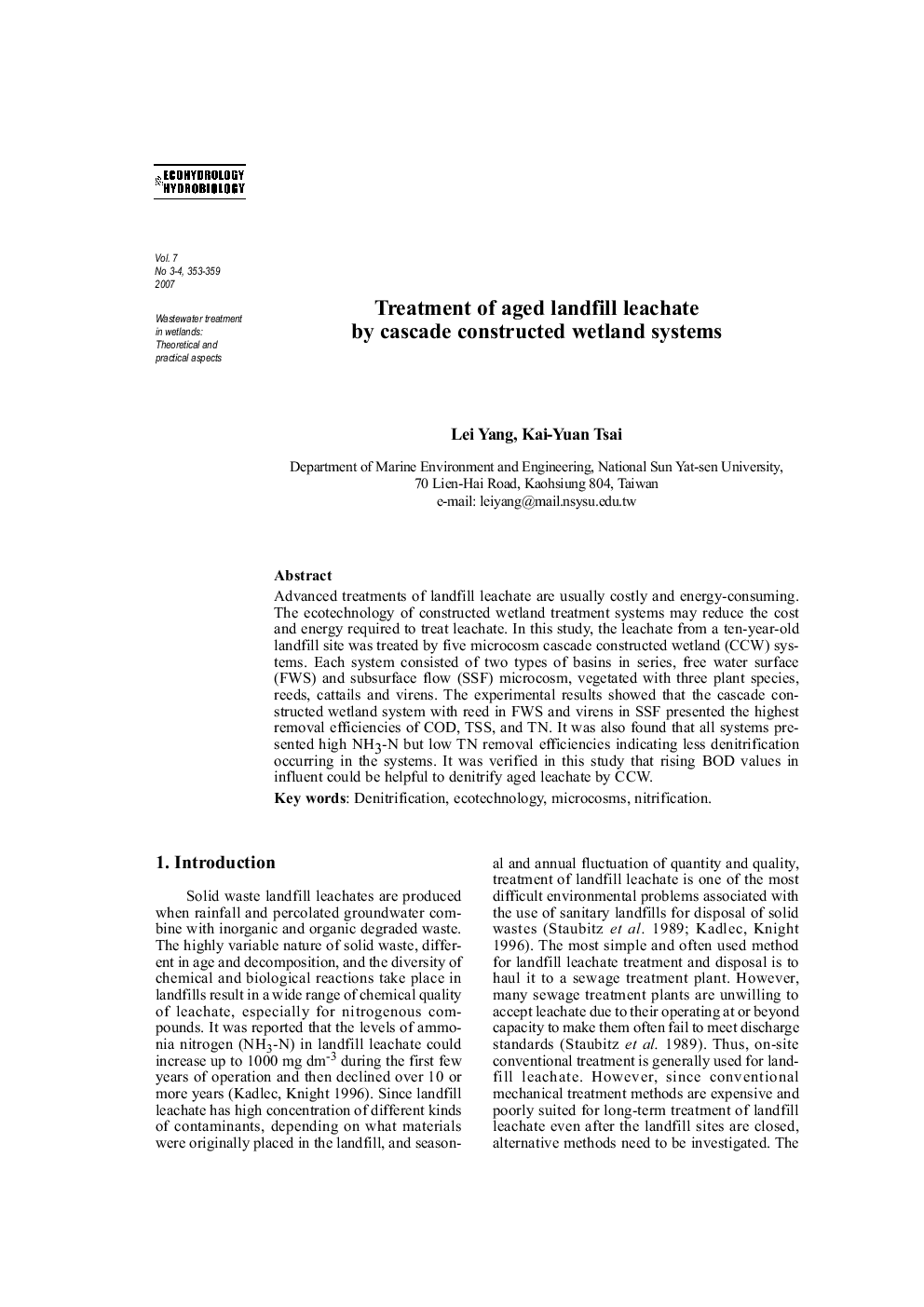| Article ID | Journal | Published Year | Pages | File Type |
|---|---|---|---|---|
| 4388277 | Ecohydrology & Hydrobiology | 2007 | 7 Pages |
Abstract
Advanced treatments of landfill leachate are usually costly and energy-consuming. The ecotechnology of constructed wetland treatment systems may reduce the cost and energy required to treat leachate. In this study, the leachate from a ten-year-old landfill site was treated by five microcosm cascade constructed wetland (CCW) systems. Each system consisted of two types of basins in series, free water surface (FWS) and subsurface flow (SSF) microcosm, vegetated with three plant species, reeds, cattails and virens. The experimental results showed that the cascade constructed wetland system with reed in FWS and virens in SSF presented the highest removal efficiencies of COD, TSS, and TN. It was also found that all systems presented high NH3-N but low TN removal efficiencies indicating less denitrification occurring in the systems. It was verified in this study that rising BOD values in influent could be helpful to denitrify aged leachate by CCW.
Related Topics
Life Sciences
Agricultural and Biological Sciences
Agricultural and Biological Sciences (General)
Authors
Lei Yang, Kai-Yuan Tsai,
